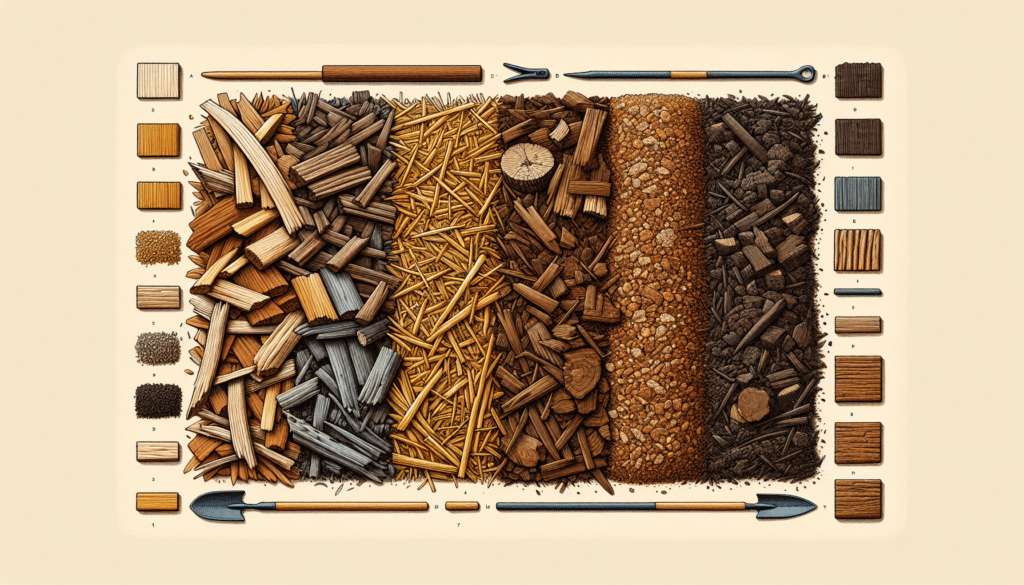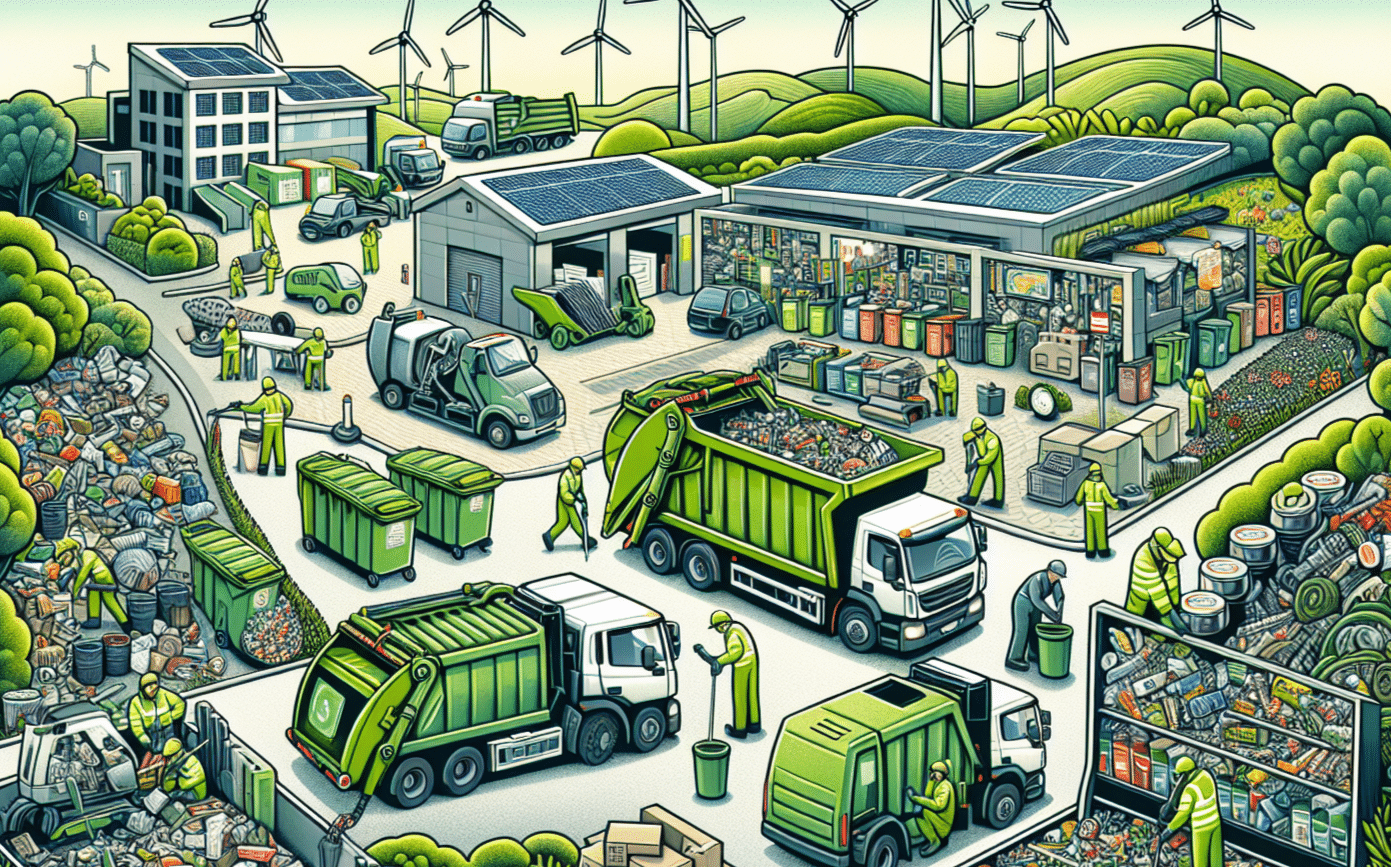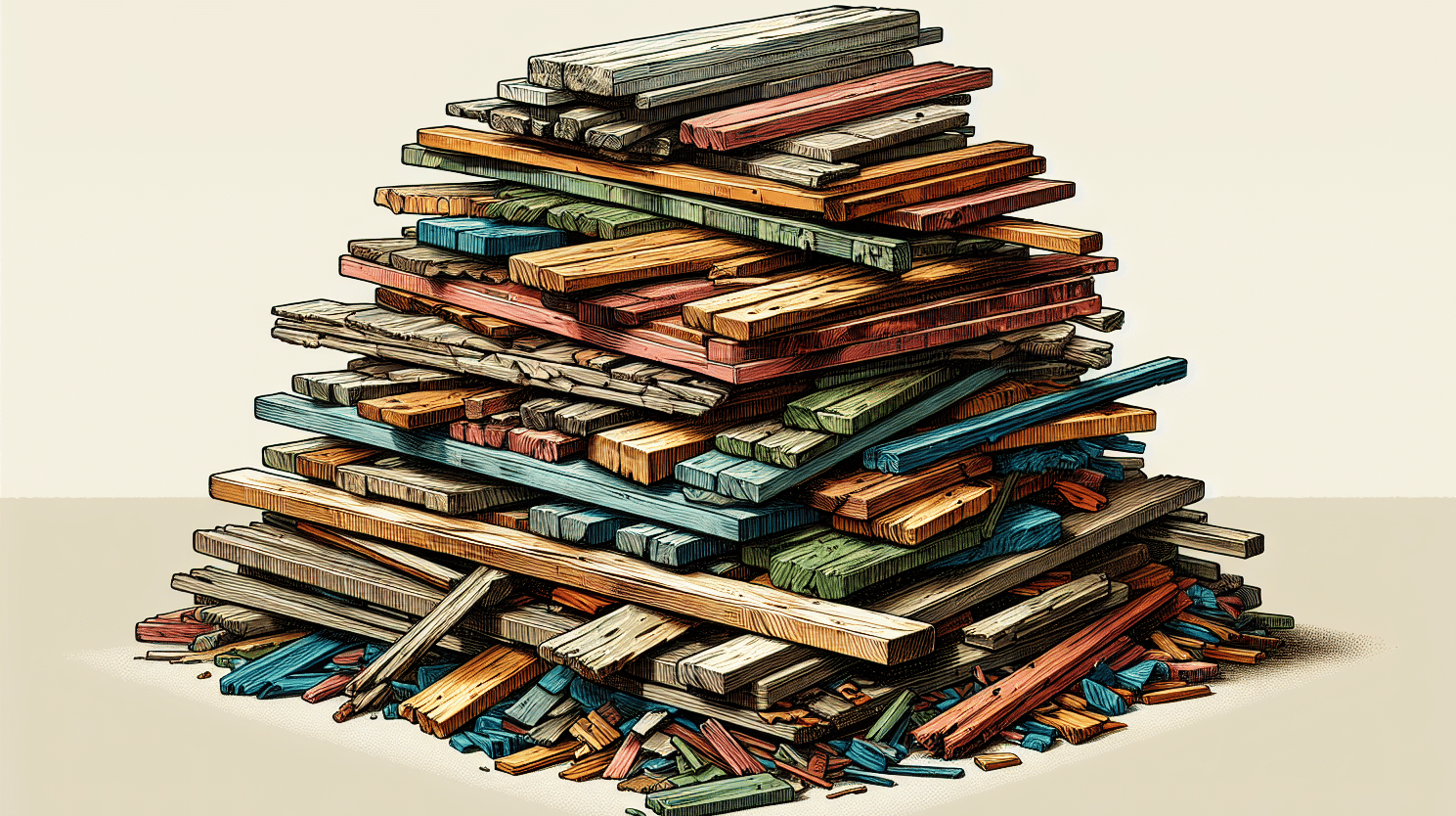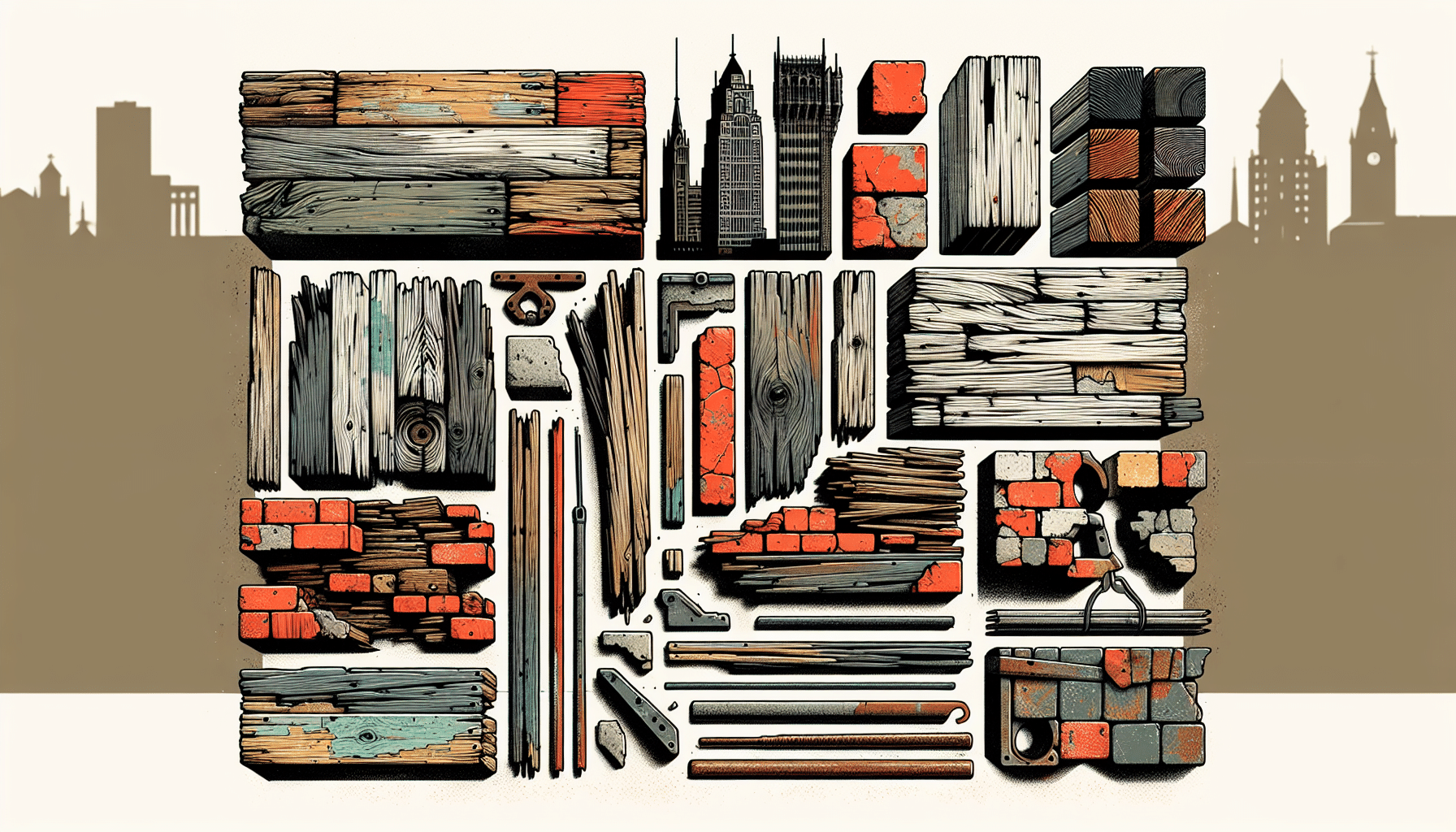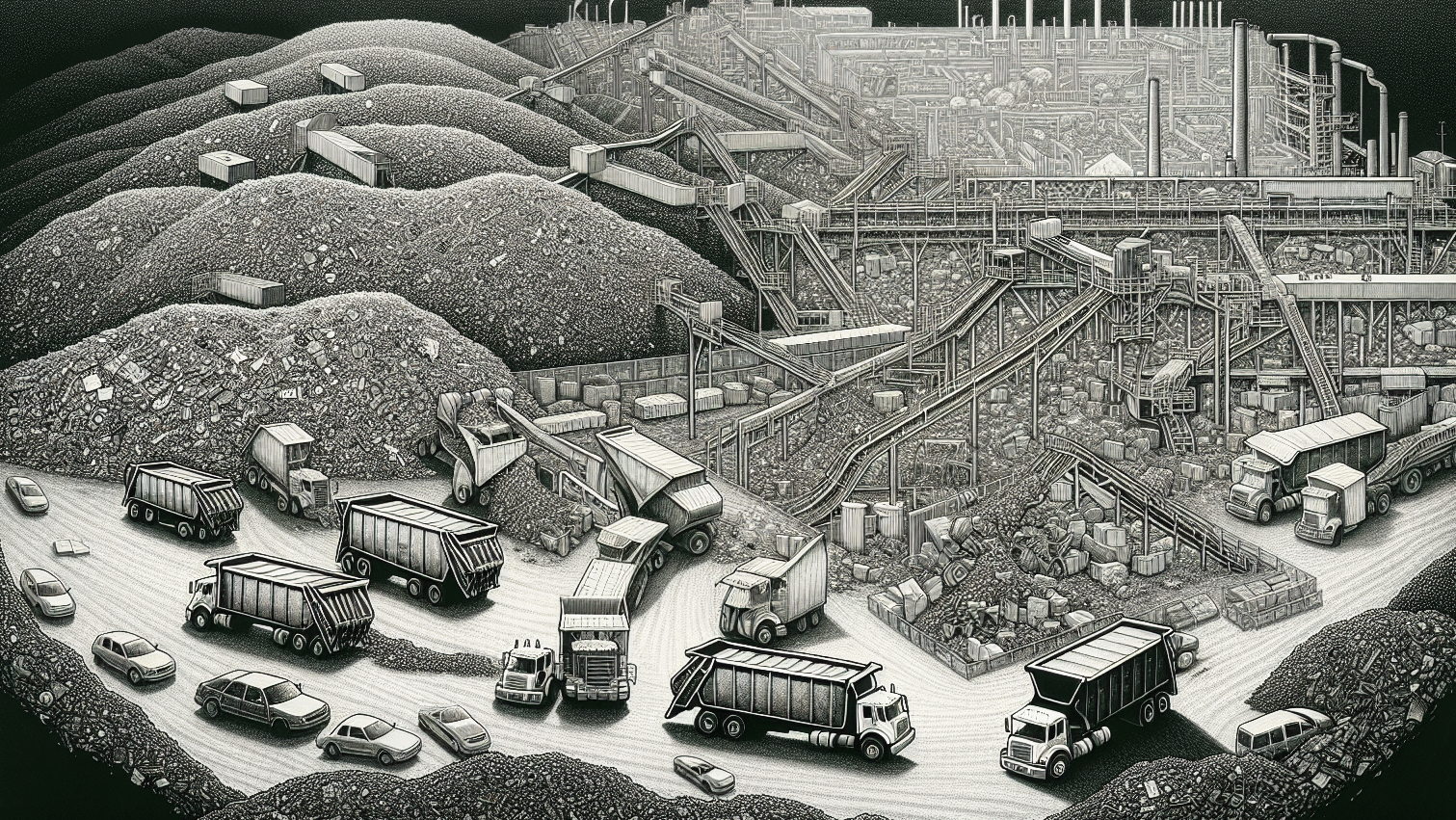When nurturing your garden, selecting the right mulch is critical. Gardeners often ask: What mulch best maintains soil health, conserves water, and keeps weeds at bay? Our guide dives into the world of mulch for gardens, comparing organic and inorganic options and detailing practical application tips. Discover the mulch that best suits your garden’s needs without wading through unnecessary information.
Key Takeaways
- Mulch serves multiple garden functions, including conserving soil moisture, suppressing weeds, improving soil structure, boosting fertility, and supporting beneficial soil organisms.
- The choice between organic mulch (which decomposes to enrich soil) and inorganic mulch (durable and moisture-retaining) is dictated by your garden’s desired outcomes and conditions.
- Applying and maintaining the correct amount of mulch is critical; too much can suffocate plant roots and lead to pests and diseases, while the right amount offers protection and nurtures plant health.
Understanding Mulch: The Key to a Thriving Garden
Mulch, a simple yet powerful garden ally, is an essential protective blanket for your soil. It’s much more than just ground cover; mulch is a multitasker, keeping moisture in, weeds out, and ensuring that the soil and plant roots remain temperate under the scorching sun or the chill of frost. Imagine mulch as the guardian of your garden, conserving water, shielding the soil from erosion, and offering a buffer against the mechanical onslaught of landscaping tools.
However, the benefits of mulch don’t stop at mere protection; organic varieties, such as straw mulch and shredded leaves, preserve soil moisture and enrich the garden soil, adding organic matter as they break down. This decomposition nurtures your soil, improving its structure, boosting fertility, and inviting beneficial soil organisms to dine and dwell within, ultimately supporting robust plant growth. Some of the benefits of using mulch in your garden include:
- Preserving soil moisture
- Adding organic matter to the soil
- Improving soil structure
- Boosting soil fertility
- Supporting beneficial soil organisms
Using mulch in your garden can create a healthy and thriving environment for your plants.
Organic vs. Inorganic Mulch
The tale of mulch is one of two paths: organic and inorganic. Each has its narrative and role in the garden. Organic mulches, such as grass clippings and wood chip mulch, are born from the earth — leaves, trees, and grass — and return to it, leaving behind a legacy of nutrients as they decompose. They are the storytellers of the soil, spinning tales of life cycles and organic matter, enriching the plot with every layer.
In contrast, inorganic mulches, like stones and plastic, focus on the pragmatic — retaining moisture, suppressing weeds, and standing the test of time. These mulches:
- Do not break down
- Do not enrich the soil with organic materials
- Prevent weed growth
- Are champions of moisture conservation
Synthetics such as landscape fabric and plastic mulch have their script in the garden drama — they’re seasonal actors, needing removal after the finale of the growing season. Still, they do not contribute to the soil’s ongoing story as they are inert and do not decompose.
Factors to Consider When Choosing Mulch
Selecting the best mulch for your garden beds is akin to choosing the proper attire for the weather; it demands consideration of the conditions and desired outcomes. The ideal mulch acts like an insulating blanket, trapping warmth, thwarting weed growth, and allowing water to permeate, ensuring the soil stays quenched. However, not all mulches are created equal. Some have hidden hitchhikers — weed seeds or chemicals — that can disrupt your garden’s harmony. Vigilance is key.
Vet your mulch sources, whether a local garden center or a free mulch program, to ensure your garden is dressed in weed-free and chemical-free finery.
Top Mulch Options for Gardens
Navigating the mulch maze can be bewildering, with each path promising different delights for your garden. Whether your plot is a thriving vegetable garden or a sanctuary for perennial plants, there’s a mulch to meet every need. For the vegetable gardeners tending to their vegetable gardens, shredded leaves are akin to a secret sauce, blending seamlessly with the soil, enticing earthworms, and decomposing over winter to shield the soil. Straw and hay are the stalwarts of vegetable beds, decomposing leisurely and providing a bulwark against pests. And for those acid-loving plants, pine needles offer a mulch that stands firm against the wind and resists the crush of soil compaction.
Then there are the eco-warriors: newspaper and cardboard, allies in the fight for a green world, biodegradable and beloved by soil organisms. With a mulch for every purpose, the health and appearance of your garden soil are but a layer away.
Shredded Bark and Wood Chips
Shredded bark and wood chips are the long-lasting sentinels of the mulch world. Their coarse texture is more than just pleasing to the eye; it’s a formidable barrier against the encroachment of weeds. Best suited for the undisturbed serenity of perennial garden beds or the structured grace of shrubby landscapes, these organic materials decompose at a stately pace, providing a long-term aesthetic appeal.
The arborist’s wood chip mulch, free from dyes and repurposed pallet wood, is a natural choice that boosts soil health as it breaks down without the guilt of nitrogen theft. Yet, for all their benefits, shredded bark mulch may necessitate a supplemental dose of organic fertilizer to counter potential nitrogen depletion, ensuring plants receive all the nutrients they need for growth.
Compost and Grass Clippings
Compost, the dark, crumbly gold of the garden, is a mulch that does more than cover the soil — it enriches it. It’s the alchemist of the mulch world, transforming garden beds into fertile crescents that burgeon with vegetables and flowers, improving soil quality and texture.
Grass clippings, a common byproduct of the suburban landscape, can be repurposed as mulch, rapidly breaking down to bestow a bounty of nutrients upon the soil and serving as a natural weed suppressor. However, caution is the gardener’s watchword. Avoid the remnants of herbicide-treated lawns, as they can carry unwanted chemical guests into your garden. And beware of the grass clippings’ darker side: without proper management, they can become odorous, slimy barriers to water infiltration.
Stone and Gravel
For a more permanent path in the garden, stone and gravel are enduring mulch options, perfect for the minimalist beauty of rock gardens or the clean lines of modern design. Pair them with landscaping fabric, and you have a fortress against weeds, a low-maintenance solution that spares the gardener countless hours of weeding.
Unlike their organic counterparts, these inorganic mulches need only a shallow layer — a mere inch will suffice — to fulfill their role, offering a durable and stylish solution that sidesteps decomposition cycles.
Mulching Techniques for Optimal Garden Health
The art of mulching is not simply a matter of scattering materials over the soil; it’s a nuanced performance that requires timing, technique, and a keen sense of the needs of your plants. Before the curtain rises on each growing season, lay down your chosen mulch, keeping in mind that the frequency of this ritual varies with the type of mulch you’ve selected.
When used as mulch, newspapers need a careful choreography: a foundation of sheets laid around plants, moistened, and then topped with a layer of another organic mulch to secure and disguise them. If starting seeds, straw mulch takes the stage with a lighter touch to avoid weighing down the tender shoots. With their penchant for wind resistance, pine needles require a more generous hand, a layer of three to four inches, to ensure they perform their role effectively.
Proper Mulch Application
As with any garden practice, there’s a method to the mulching madness. The golden rule: a mulch layer that’s just right — not too thin or thick, but a perfect two to four inches to keep water in and weeds out without suffocating the soil. Apply your mulch with a careful hand, ensuring it’s thick enough to block the sun’s rays and suppress weeds yet not so heavy as to impede the very life it’s meant to support.
Timing is as crucial as depth; apply mulch too early, and you may keep the soil too cool for spring’s warm-up act. Remember to respect the personal space of your plants, keeping mulch away from stems and leaves to prevent unwanted guests — pests and diseases — that thrive in the moist embrace of mulch. Choose your mulch wisely and apply it precisely, and your garden will thank you with a bounty of blooms and harvests.
Mulch Maintenance
Maintaining your mulch is much like tending to a cherished garden path; regular care ensures its beauty and function endure. Replenish your mulch twice a year, in the spring, to awaken the soil, and in the fall to prepare it for winter’s slumber to preserve the protective qualities that insulate your plants from temperature extremes.
When it’s time to refresh, remove the old before welcoming the new, ensuring the mulch remains effective and free from the residue of seasons past. As the year progresses, rake or turn your mulch a few times each season to prevent compaction and allow air to circulate, encouraging healthy roots and vibrant plant growth.
In the face of wind or rain, consider the weight of your mulch or create borders around your beds to keep it in place, a simple tactic to ensure your mulch remains where it’s most needed.
Watering and Fertilizing with Mulch
Watering a mulched garden is an art in itself. With mulch acting as a moisture manager, your plants’ thirst may not be as frequent or dire as expected. For those who embrace the sleek efficiency of plastic mulch, a drip irrigation system is a perfect underlayer, ensuring water reaches the roots without waste.
But beware when mulching with wood chips or pine bark nuggets; as these organic materials break down, they may call dibs on the soil’s nitrogen, necessitating an extra helping of this crucial nutrient to keep your plants healthy and happy.
Are you fertilizing over mulch? Sprinkle granular fertilizer atop the soil surface and give it a good watering to carry the nutrients down to the roots, a simple way to feed your soil and your plants in one go.
Potential Mulch Pitfalls and How to Avoid Them
Mulch can be a garden’s best friend or its subtle foe; the difference lies in the details of its use. Misapplied mulch can lead to unintended consequences that mar the landscape you’ve so carefully cultivated.
Pine bark mulch, for instance, has been cleared of the accusation of nitrogen theft when used as a surface layer — no need to worry about your soil being robbed of this vital nutrient. And those acidic pine needles? They’re not the soil sourpusses they’ve been made out to be; as they decompose, they neutralize, leaving no long-term acidic trace.
Weed Seeds and Contamination
A garden free from the tyranny of weeds is a joy to behold, and the right mulch can help you achieve this idyllic state. Opt for weed-free salt hay or ensure your grass clippings haven’t fraternized with herbicides to prevent chemical intrusion. Straw mulch is a cozy blanket for your soil, but pick one free of weed seeds lest you invite a garden invasion. Trust in reputable suppliers for your mulch, those who uphold the highest standards of cleanliness and control in their production, to minimize the risk of introducing weed seeds or soil-borne diseases.
And when weeds dare to rear their heads, bolster your defenses with an extra layer of mulch or the targeted use of herbicides; always be mindful of your plants’ well-being. Consider landscape fabric as an ally, a barrier that blocks weeds while nurturing soil with air and water, the twin essences of life.
Pest Infestations
The mulch you choose can be a battleground for garden pests or a bulwark against them. Cedar and cypress chip or bark mulches contain compounds that bugs hate, making them a smart choice for minimizing pest drama. Regular garden inspections are necessary, as some mulches can be a siren call for insects, luring them into your garden and potentially leading to infestations.
Be wary of applying mulch too thickly, for it can:
- Create a cozy abode for voles, garden menaces that gnaw and girdle with glee
- Smother emerging plants
- Stifle natural reseeding
- Harbor slugs
Over-Mulching and Soil Issues
The maxim ‘less is more’ holds when it comes to mulching. An ideal mulch layer maintains a depth of two to four inches; cross this threshold, and you risk suffocating the soil, a scenario no gardener wishes to face. Excessive mulching is the bane of breathable earth, causing soil compaction that blocks the flow of air to plant roots and impedes water retention and nutrient uptake. By maintaining the right mulch depth, you can also ensure optimal soil temperature for your plants.
In a desperate search for oxygen and moisture, the roots may grow into the mulch layer, leaving them exposed and vulnerable to drought-induced problems under dry conditions. Beware the folly of ‘volcano mulching,’ where mulch is piled high against plant trunks, fostering too much moisture decay and inviting disease and insect issues. Be mindful also of seasonal plant cycles, as over-mulching can retain excessive warmth in the root zone during fall or overly cool it during spring, disrupting the natural rhythms of your garden.
Customizing Mulch for Your Garden’s Unique Needs
Every garden is a unique canvas, and mulching is one of the tools in your artistic arsenal to create a masterpiece tailored to your vision and the needs of your plants. From the vivid aesthetics to the functional aspects of weed and moisture control, the right mulch can accentuate the beauty of flower beds, complement the theme of landscape designs, and contribute to the garden’s overall health.
Whether you wish to bring a splash of color to your garden or you’re looking for a sustainable solution that aligns with your eco-conscious ethos, there’s a mulch that fits the bill, waiting to be applied with a discerning hand.
Colorful and Decorative Mulches
Mulch doesn’t just protect and nurture; it can dazzle and add flair to your garden beds. Decorative mulches, whether dyed or natural, are the accessories of the garden world, bringing a touch of elegance and cohesiveness to your outdoor space.
Dyed wood mulches come in a palette of colors, from the rich earthiness of brown to the bold statement of black, providing a backdrop that makes the greenery and blooms pop. For a more rustic charm, pine bark nuggets offer an aesthetic choice in various sizes to suit any garden path or bed, and as a bonus, they’re long-lasting and weed-discouraging.
If you’re using landscape fabric or plastic mulch, consider topping it with a thin layer of bark. This enhances the garden’s appearance and melds the function with the decorative.
Eco-Friendly and Sustainable Choices
In the age of sustainability, eco-friendly mulch options stand out for their environmental benefits and enduring nature. Recycled rubber mulch, crafted from the remains of old car tires, is a testament to the ingenuity of repurposing. This mulch embodies resilience, retaining moisture and deterring weeds over the long haul without breaking down. It’s a fitting choice for permanent landscaping features, like walkways or playgrounds, where its longevity and cushioning properties shine and where the desire for a low-maintenance, yet aesthetically pleasing, mulch is paramount.
Specialized Mulches for Unique Gardens
Some gardens come with their own rules, needing specialized mulches catering to their unique conditions. For instance, tender perennials bracing for winter’s chill may benefit from a protective layer of straw or shredded mulch, ensuring they emerge in spring unscathed. But what about the rooftop oasis or the container garden perched on a balcony? The general mulch narrative may not cover these specialized spaces, but fear not, for there are resources for those seeking the best mulch for their niche garden habitats.
Whether creating a haven for wildlife or adapting to the urban jungle’s constraints, the right mulch can make all the difference. Seek additional resources and expert advice to ensure that your unique garden thrives amid its challenges.
Summary
As we draw the mulch conversation to a close, it’s clear that this vital garden component is more than a mere covering; it’s a dynamic and multifaceted ally in the quest for garden health and vitality. From the enriching power of organic mulch to the enduring nature of inorganic options, mulch can be tailored to fit your garden’s needs, aesthetic preferences, and environmental ethos. Apply it carefully, maintain it diligently, and adjust your watering and fertilizing accordingly. Embrace the mulch that matches your garden’s personality, and watch as it becomes a bastion of beauty and productivity.
Frequently Asked Questions
How do I choose the right type of mulch for my garden?
To choose the right mulch for your garden, consider the needs of your plants, the climate, and your visual preferences. Organic mulches benefit soil and plant health, while inorganic mulches offer low maintenance and durability. Assess factors like insulation, weed control, and water permeability when deciding.
Can mulch attract pests to my garden?
Yes, some types of mulch can attract pests, but you can minimize this risk by choosing pest-resistant materials like cedar or cypress chips and maintaining proper mulch depth.
How thick should I apply mulch to be effective?
To effectively benefit your plants, apply a two to four-inch layer of mulch, ensuring it is spread evenly and not piled against plant stems, which can lead to rot and disease.
Is it necessary to remove old mulch before adding a new layer?
It’s best to remove old mulch or mix it into the soil before adding a new layer. This helps prevent soil compaction and promotes healthier plant roots.
Are there eco-friendly mulch options available?
Yes, eco-friendly mulch options are available, such as recycled rubber mulch and compost, which align with sustainable gardening practices.
